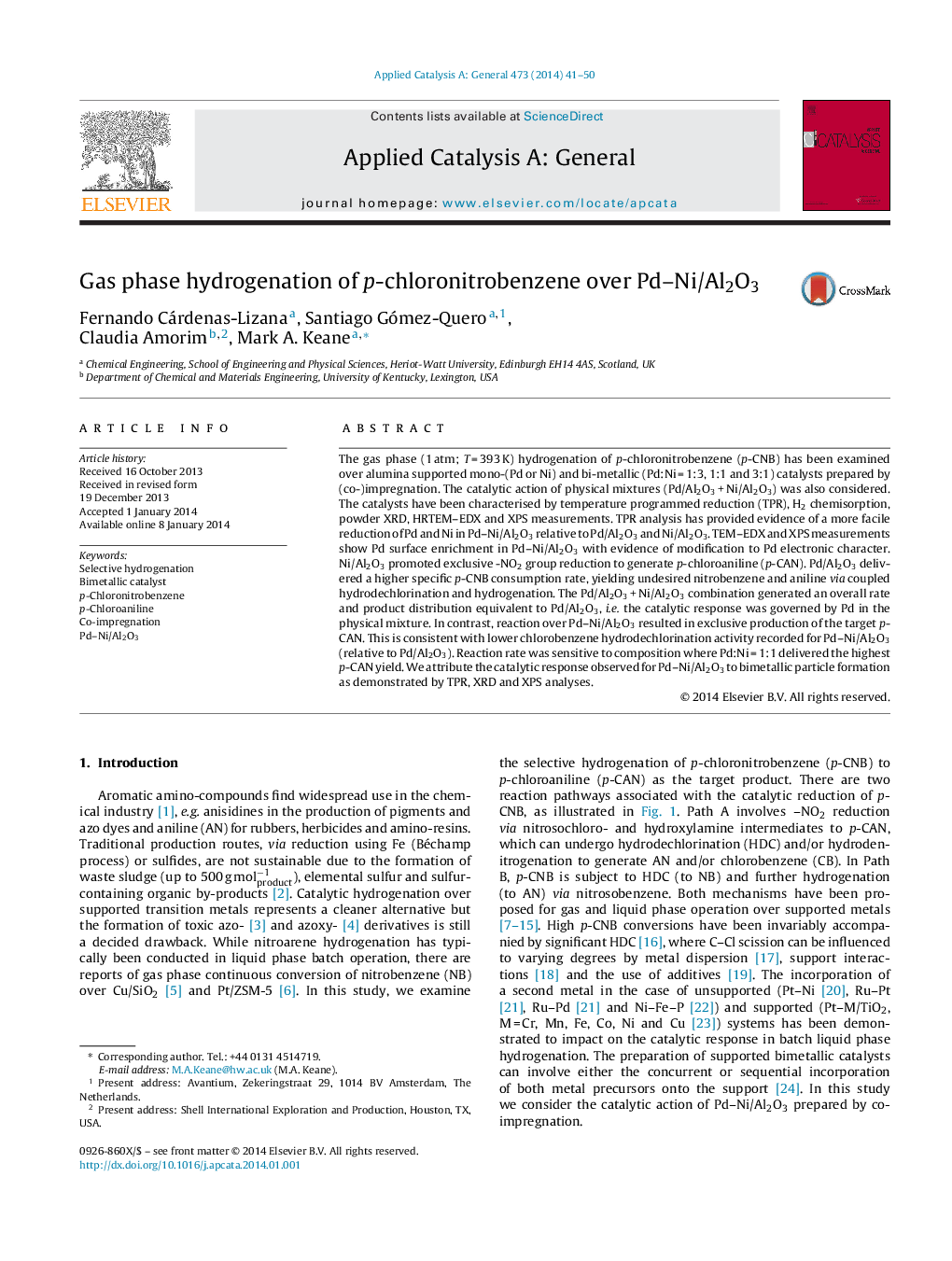| کد مقاله | کد نشریه | سال انتشار | مقاله انگلیسی | نسخه تمام متن |
|---|---|---|---|---|
| 39958 | 45841 | 2014 | 10 صفحه PDF | دانلود رایگان |

• Selective hydrogenation of p-chloronitrobenzene over Ni/Al2O3 to p-chloroaniline.
• Pd/Al2O3 promotes hydrodechlorination/hydrogenation to nitrobenzene and aniline.
• Reaction over Pd/Al2O3 + Ni/Al2O3 physical mixtures controlled by Pd/Al2O3.
• Pd–Ni/Al2O3 delivers highest activity and 100% selectivity to p-chloroaniline.
• Elevated p-chloroaniline yield linked to bimetallic particles in Pd–Ni/Al2O3.
The gas phase (1 atm; T = 393 K) hydrogenation of p-chloronitrobenzene (p-CNB) has been examined over alumina supported mono-(Pd or Ni) and bi-metallic (Pd:Ni = 1:3, 1:1 and 3:1) catalysts prepared by (co-)impregnation. The catalytic action of physical mixtures (Pd/Al2O3 + Ni/Al2O3) was also considered. The catalysts have been characterised by temperature programmed reduction (TPR), H2 chemisorption, powder XRD, HRTEM–EDX and XPS measurements. TPR analysis has provided evidence of a more facile reduction of Pd and Ni in Pd–Ni/Al2O3 relative to Pd/Al2O3 and Ni/Al2O3. TEM–EDX and XPS measurements show Pd surface enrichment in Pd–Ni/Al2O3 with evidence of modification to Pd electronic character. Ni/Al2O3 promoted exclusive -NO2 group reduction to generate p-chloroaniline (p-CAN). Pd/Al2O3 delivered a higher specific p-CNB consumption rate, yielding undesired nitrobenzene and aniline via coupled hydrodechlorination and hydrogenation. The Pd/Al2O3 + Ni/Al2O3 combination generated an overall rate and product distribution equivalent to Pd/Al2O3, i.e. the catalytic response was governed by Pd in the physical mixture. In contrast, reaction over Pd–Ni/Al2O3 resulted in exclusive production of the target p-CAN. This is consistent with lower chlorobenzene hydrodechlorination activity recorded for Pd–Ni/Al2O3 (relative to Pd/Al2O3). Reaction rate was sensitive to composition where Pd:Ni = 1:1 delivered the highest p-CAN yield. We attribute the catalytic response observed for Pd–Ni/Al2O3 to bimetallic particle formation as demonstrated by TPR, XRD and XPS analyses.
Figure optionsDownload high-quality image (187 K)Download as PowerPoint slide
Journal: Applied Catalysis A: General - Volume 473, 5 March 2014, Pages 41–50